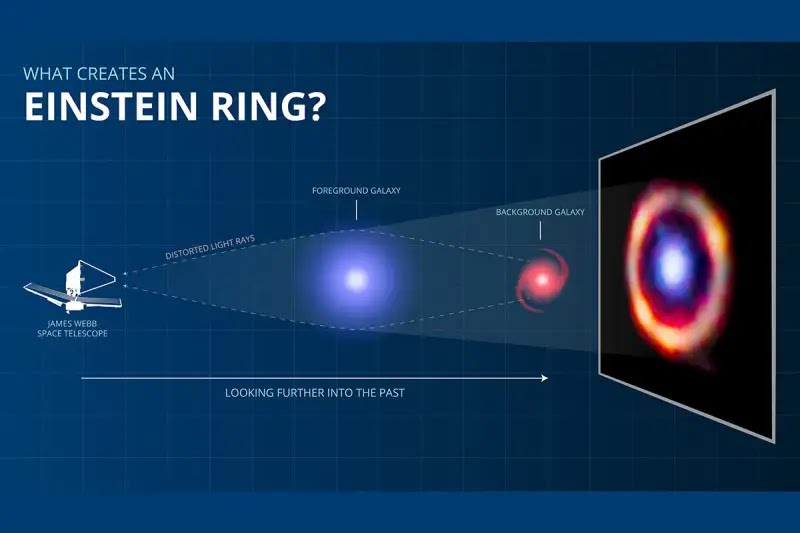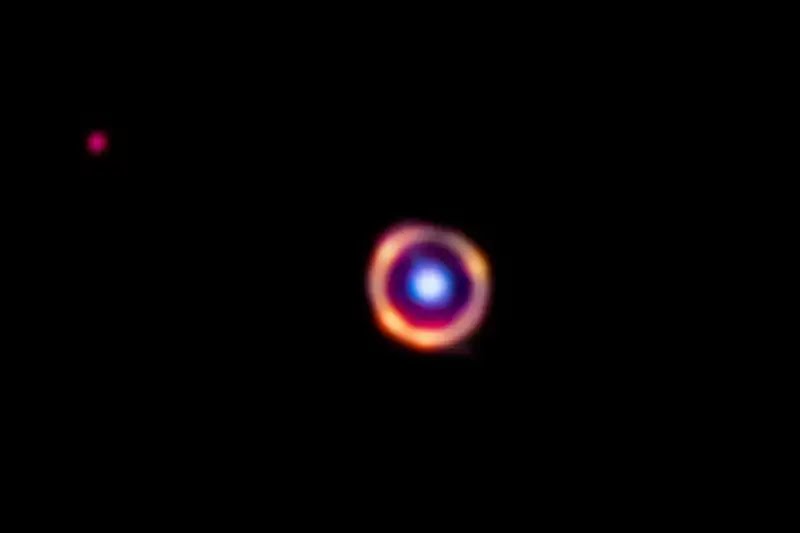In a monumental achievement, scientists have utilized the cutting-edge James Webb Space Telescope to detect complex organic molecules in a galaxy located over 12 billion light-years away from our planet.
This distant galaxy now holds the record for being the farthest known location where such molecules have been observed, providing valuable insights into the intricate chemical processes that occurred in the early universe.
The research team, led by Joaquin Vieira, an astronomy and physics professor at the University of Illinois Urbana-Champaign, collaborated with scientists from Texas A&M University and international partners to conduct this groundbreaking study.
By leveraging the advanced capabilities of the recently launched James Webb Space Telescope and employing meticulous analyses, the team has achieved a significant breakthrough in understanding the complex chemical interactions that took place in the first galaxies of the early universe.
Related: JWST Shows Early Universe Crackled With Bursts of Star Formation
Unveiling the Invisible: Overcoming Dust Obstruction
One of the major challenges in studying distant galaxies is the presence of dust, which obstructs the visibility of celestial objects. Dust grains possess the ability to absorb and re-emit a substantial portion of the stellar radiation, rendering infrared light from distant objects incredibly faint or even undetectable by ground-based telescopes.
Professor Vieira, who initially began this project during his graduate studies, explains, “Dust grains absorb and re-emit about half of the stellar radiation produced in the universe, making infrared light from distant objects extremely faint or undetectable through ground-based telescopes.”
Photo credit: NASA
Nature’s Magnifying Glass: Gravitational Lensing
To overcome the dust barrier and explore the secrets of the distant galaxy, the research team utilized a phenomenon known as gravitational lensing, often referred to as “nature’s magnifying glass.” Gravitational lensing occurs when two galaxies are nearly perfectly aligned from the perspective of Earth.
In this scenario, light from the background galaxy becomes warped and magnified by the gravitational pull of the foreground galaxy, creating a distinct ring-like shape known as an Einstein ring. By leveraging gravitational lensing, the team focused the James Webb Space Telescope on a particular object known as SPT0418-47.

The Ancient Universe Revealed: SPT0418-47
SPT0418-47 was first discovered using the National Science Foundation’s South Pole Telescope. It was identified as a dust-obscured galaxy magnified approximately 30 to 35 times through gravitational lensing. Situated an astounding 12 billion light-years away from Earth, this galaxy provides a glimpse into the universe when it was only 1.5 billion years old, accounting for a mere 10% of its current age.
Prior to the JWST observations, the dust obscured the background galaxy, rendering it invisible and inaccessible for analysis. However, the spectroscopic data obtained by the James Webb Space Telescope unveiled crucial information about the interstellar gas within SPT0418-47.
The data indicated a significant enrichment of heavy elements in the obscured gas, suggesting the existence of previous generations of stars that have lived and perished in this ancient galaxy.
Unveiling the Building Blocks of Life: Complex Organic Molecules
The most remarkable finding of this study is the detection of a specific type of molecule called polycyclic aromatic hydrocarbon (PAH) within SPT0418-47. On Earth, PAHs are found in various sources, such as the exhaust of combustion engines and forest fires. These organic molecules, composed of carbon chains, are considered the fundamental building blocks for the earliest forms of life.
Kedar Phadke, a graduate student involved in the research, emphasizes the significance of this discovery, stating, “What this research is telling us right now—and we are still learning—is that we can see all of the regions where these smaller dust grains are located—regions that we could never see before the JWST.” The spectroscopic data obtained from the JWST observations allows scientists to study the atomic and molecular composition of the galaxy, providing crucial insights into the formation, evolution, and lifecycle of galaxies.
A Game-Changing Discovery: Looking Towards the Future
Professor Vieira expresses his astonishment, stating, “We didn’t expect this. Detecting these complex organic molecules at such a vast distance is game-changing regarding future observations.” This groundbreaking research serves as just the initial step, as scientists continue to explore the capabilities of the James Webb Space Telescope and unravel its potential for further discoveries.
The study conducted by the research team signifies a moment of scientific triumph and highlights the importance of investments in advanced astronomical instruments. Professor Vieira expresses his gratitude to the U.S. taxpayers, as well as the National Science Foundation and NASA for their funding and support, acknowledging that without these instrumental contributions, this groundbreaking discovery would not have been possible.
As scientists delve deeper into the mysteries of the universe, aided by technological advancements like the James Webb Space Telescope, humanity stands poised to gain unparalleled knowledge about our cosmic origins and the potential for life beyond our own world.
